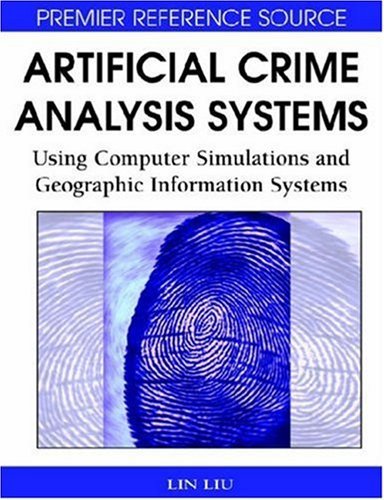Table of Contents, Contributors and Preface
Reviewed by
Armando Geller
Center for Social Complexity, George Mason University
 The fundamental dichotomy of what is good and what is bad has inspired intellectual and academic thought for millennia. Crime and its prevention is an important dimension of this dichotomy. Intensive academic work in the field therefore comes as little surprise. In 1971 Thomas C. Schelling wrote a most noteworthy article titled "What Is the Business of Organized Crime?" (1971a). I am not able to produce biographic evidence to draw a direct line between Schelling's reasoning on organized crime and his seminal agent-based work on segregation presented to the public in the same year (1971b). But the coincidence is remarkable.
The fundamental dichotomy of what is good and what is bad has inspired intellectual and academic thought for millennia. Crime and its prevention is an important dimension of this dichotomy. Intensive academic work in the field therefore comes as little surprise. In 1971 Thomas C. Schelling wrote a most noteworthy article titled "What Is the Business of Organized Crime?" (1971a). I am not able to produce biographic evidence to draw a direct line between Schelling's reasoning on organized crime and his seminal agent-based work on segregation presented to the public in the same year (1971b). But the coincidence is remarkable.Computational social science and in particular agent-based modeling are effective methodologies and techniques respectively in the study of crime. Crime is conducted by individuals and groups in socio-spatial environments. Agent-based social simulation is devised to study manifestations emerging from such systems. The book at hand provides a timely entrée to the subject, even though some of the novelty claims made are slightly exaggerated. The book is worth reading and should be noted by the broader social simulation community. The collection of chapters is organized around the following sections: The Role of Simulation in Crime Research; Streets, Networks, and Crime Distribution; Crime Event and Pattern Simulations; and Criminal Justice Operation Simulations. The three major subjects the reported research revolves around are: validation, spatial representation, and simulation-derived policy implications.
Many authors not only acknowledge the importance of validation, but also demonstrate their ability to test their model results against real data. These exercises are facilitated by the use of fine-grained geographical and time-referenced datasets. Spatial representation of crime, both in silico and by way of statistical target system data analysis, receives special attention (see for example Chapter XIV "The Simulation of the Journey to Residential Burglary" by Karen L. Hayslett-McCall et al.). So does explicit and intelligible founding of agent behavior in (empirically tested) theory and/or data. Findings with policy relevance thus become more credible. Other subjects touched upon include how much and what kind of visualization is needed and the importance of replication.
The editors Lin Liu and John Eck do a very good job in compiling a body of research that is in accordance with current modeling practices and standards. Further discussion of the practice of hybrid modeling - i.e. the combination of different types of models such as agent-based, systems dynamics, and neural networks into one simulation model, as conducted in many of the chapters - would have certainly been a plus. Nevertheless, this collection of papers makes a reasonable contribution to the understanding of computational social science as a complementary alternative to more orthodox approaches in the social sciences.
This said, I have three criticisms of the book. The first is perhaps a tedious one, but some of the chapters do not include the essential literature. For example, the authors of Chapter XVIII "Drug Law Enforcement in an Agent-Based Model: Simulating the Disruption to Street-Level Drug Markets", Anne Dray et al., should make reference to Lee Hoffer's (2005) excellent ethnographically founded computational work on the drug market in Denver, CO. The second point of critique deals with a more serious issue (that is related with the first): The usage of qualitative data in the study of crime by means of computational social simulation and its methodological implications are neglected. Despite my openly declared bias toward qualitative research it is a fact that the more clandestine an object of investigation is the less quantitative data describing it will be available. Formal methods making use of qualitative data then become essential. Last but not least, the ethical implications of increased use of geographical and time-referenced data to fight crime have not been raised. Thematized long ago by such classic authors as Orson Welles and Aldous Huxley and publicly discussed in the last decade, researchers must reflect upon the consequences deriving from increasing security versus societal liberties every time this kind of research is conducted.
SCHELLING, T C (1971a) What is the Business of Organized Crime?. Journal of Public Law, 20(1), pp. 71-84
SCHELLING, T C (1971b) Dynamic Models of Segregation. Journal of Mathematical Sociology, 1(2), pp. 143-186
Return to Contents
of this issue
© Copyright Journal of Artificial Societies and Social Simulation, 2009